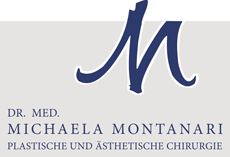Ear correction and auricle correction
Associated terms:
Ear pinning, ear pinning plasty, otopexy, otoplasty, surgery for apostasis otum
Basics of ear correction
Protruding ears (protruding ears, sail ears, apostasis otum, otapostasis) are a malformation of the outer ear. In most cases, the ear cartilage is insufficiently folded. However, an overly large auricle (concha) can also lead to this deformity.
In children, protruding ears often lead to psychological stress due to teasing. But adults can also feel insecure about their appearance and suffer as a result.
From the age of 5, the auricle hardly grows at all, so that protruding ears can be easily repositioned by surgery at pre-school age.
A harmonious ear shape can be modelled by correcting the shape, position or size of the ear.
Brief overview of ear correction:
Duration of treatment:
90 minutes
Anaesthesia:
General anaesthetic or local anaesthetic, with twilight sleep if necessary
Follow-up treatment:
Wearing a headband for 2 weeks during the day and 4 weeks at night
Load restrictions:
none
Treatment procedure
Protruding ears can be treated safely and permanently with a minor procedure under local anaesthetic. Twilight sleep or anaesthesia is also possible for anxious patients. The operation can be performed on an outpatient basis. For small children, a short inpatient stay of 1 to 2 days in our clinic may be recommended.
The ear cartilage is exposed via a skin incision behind the ear and thinned out so that it can be shaped properly. Special suturing techniques are used to ensure that the cartilage is attached to the head without tension. The wound is closed with a suture. The patient is discharged with a head bandage, which is replaced with a tight headband at the first dressing change after 2-3 days. This should be worn day and night for 2 weeks and only at night for a further 2 weeks to allow the ear cartilage to heal in its new position. The remaining scars are very fine, so that they are barely visible after just a few weeks.
In rare cases, post-operative bleeding or wound infections may occur or cartilage edges may be visible.




